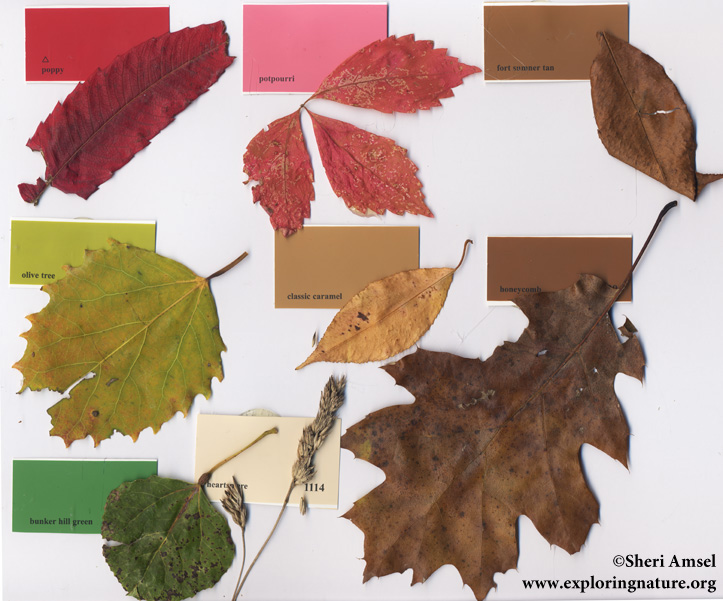

What colors do we see in nature? If you ask your students this question, they may say green, brown, red, and even blue, but the many, many shades of color in between will certainly surprise them. The Nature’s Color Wheel Investigation will help them observe the myriad of color in the world around them more fully.
Materials:
• color squares provided in PDF
• paper bag to collect colored things
• glue
• large sheet poster board
Activity:
1. Cut out the block of color squares and paste them in the middle of a large sheet of poster board.
2. Have kids look at the colors and talk to them about the different colors. Ask them what colors they think are outside in nature.
3. Send them out into the yard to collect different colored leaves, pebbles, sticks, seeds, etc. Tell them to look for things on the ground if possible (they can make an exception for a really cool colored weed).
4. Empty their bag out onto a sheet of newspaper. Ask then to try to match the plants to the pain chip colors.
5. Glue the natural items next to their colored paint chip (You may have to press the items under a heavy book over night before gluing.)
6. Ask your students if they realized there were so many colors in nature. Discuss colors.
7. Display your Nature Color Wheel
When you research information you must cite the reference. Citing for websites is different from citing from books, magazines and periodicals. The style of citing shown here is from the MLA Style Citations (Modern Language Association).
When citing a WEBSITE the general format is as follows.
Author Last Name, First Name(s). "Title: Subtitle of Part of Web Page, if appropriate." Title: Subtitle: Section of Page if appropriate. Sponsoring/Publishing Agency, If Given. Additional significant descriptive information. Date of Electronic Publication or other Date, such as Last Updated. Day Month Year of access < URL >.
Amsel, Sheri. "Nature’s Color Wheel Investigation - Group Activity" Exploring Nature Educational Resource ©2005-2024. December 15, 2024
< http://www.exploringnature.org/db/view/1384 >
